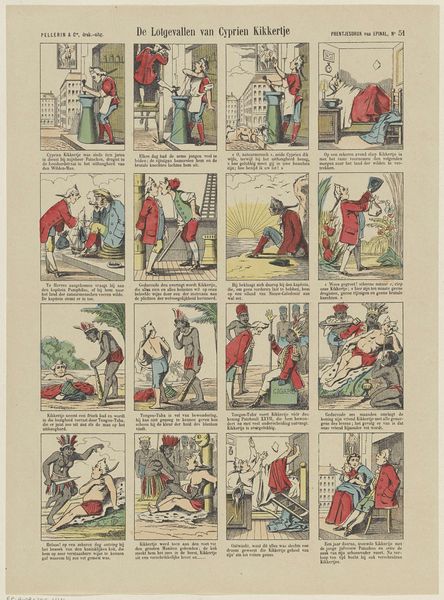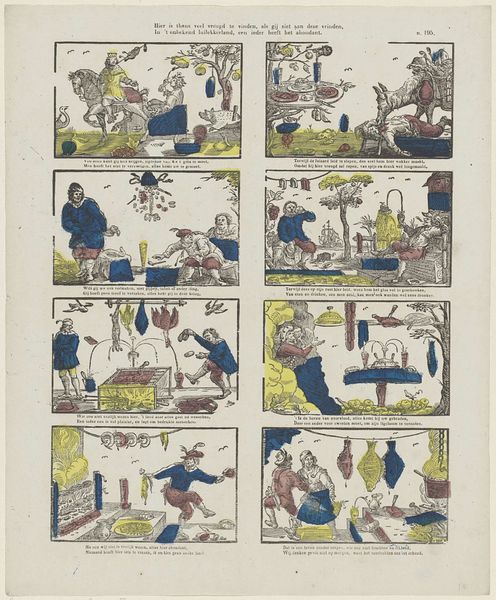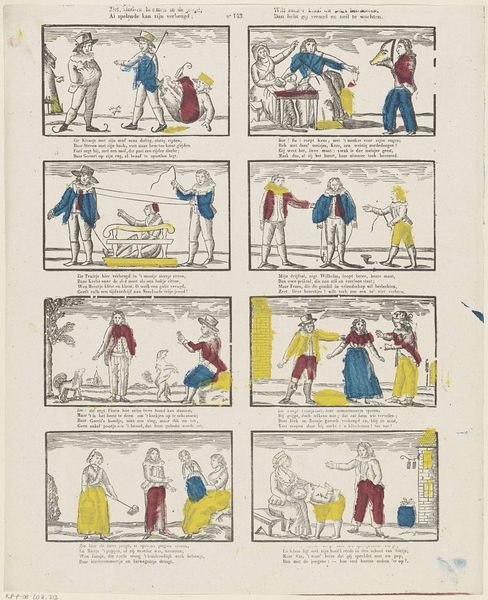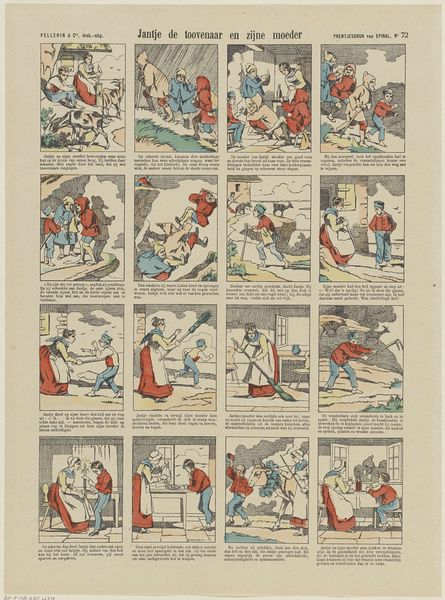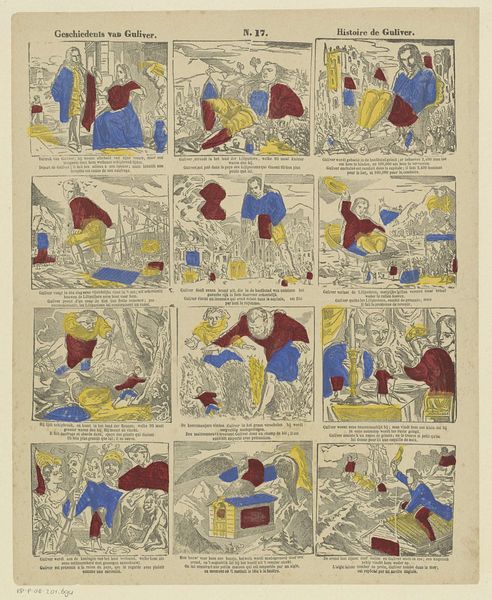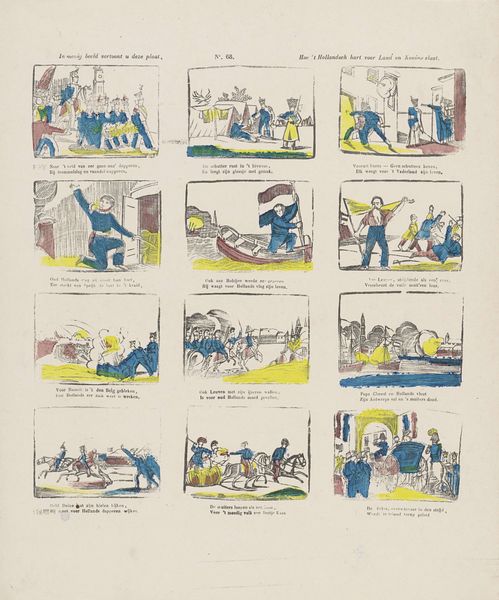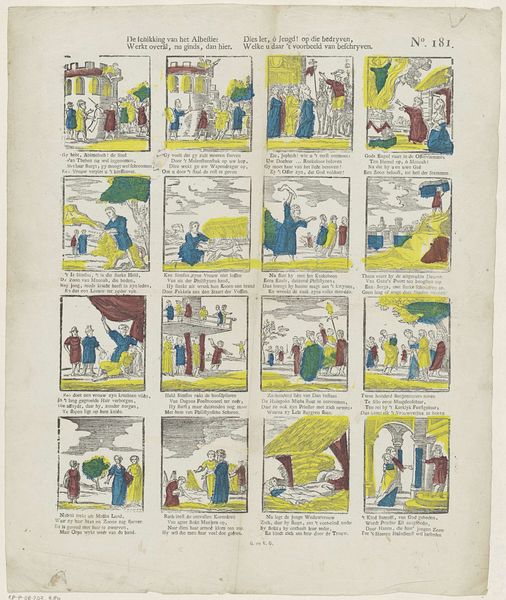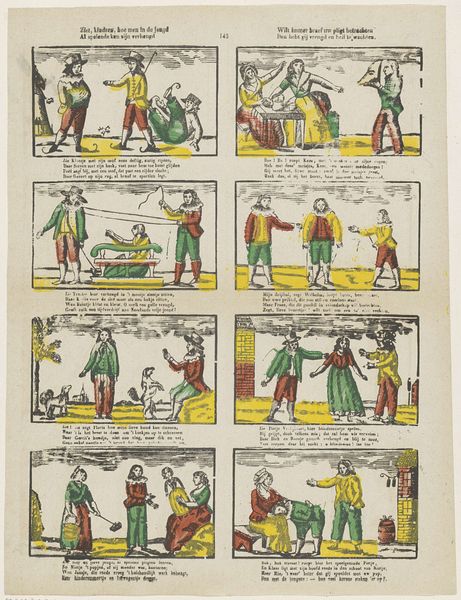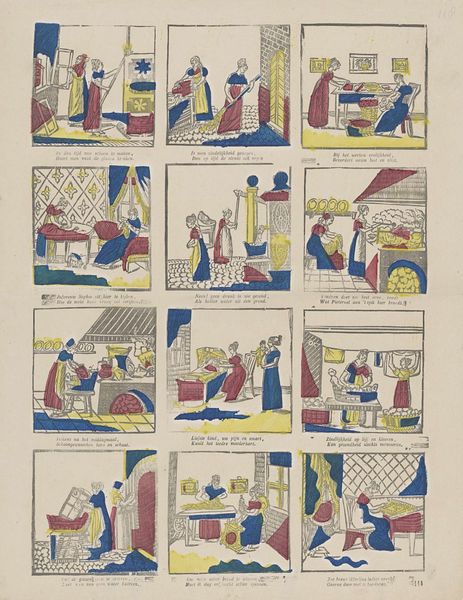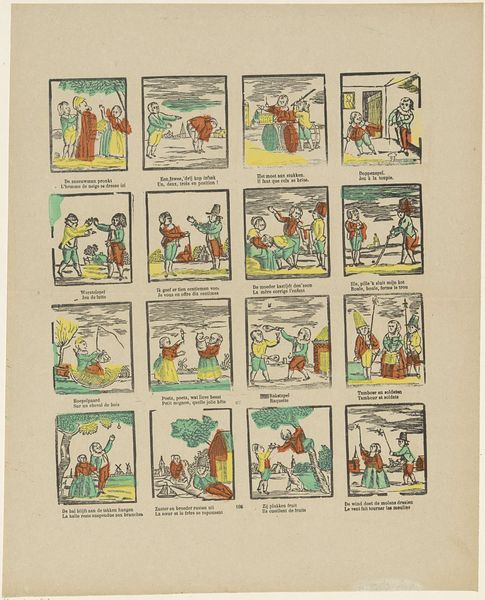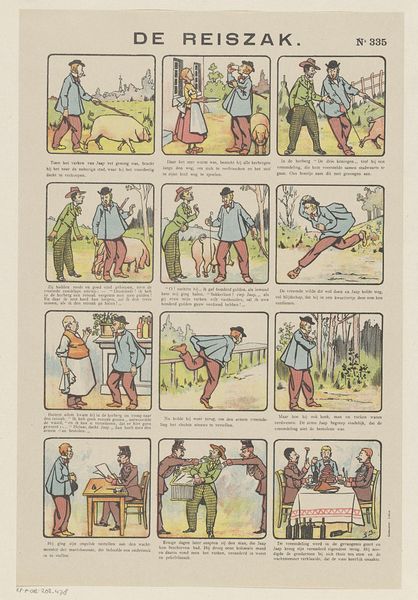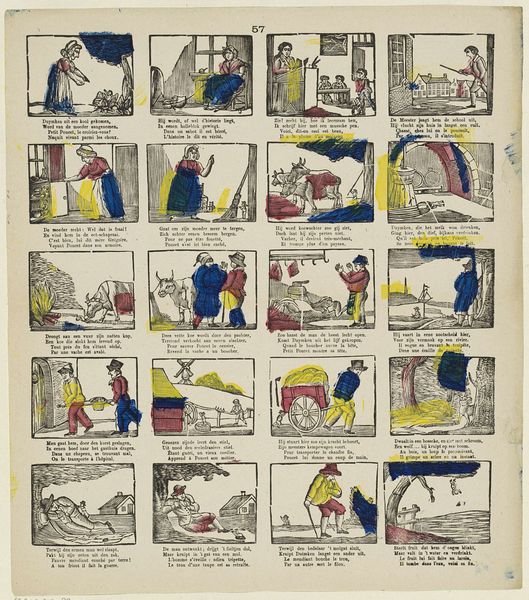
lithograph, print, paper
#
narrative-art
#
comic strip
#
lithograph
# print
#
paper
#
comic
#
history-painting
Dimensions: height 415 mm, width 334 mm
Copyright: Rijks Museum: Open Domain
Curator: I am drawn to this lithograph for its narrative qualities, almost like a proto-comic strip. This is "Het Leven van Esopus, den Phrygier" by A. Jacobs, made sometime between 1840 and 1868. The scenes tell the story of Aesop, the famous fabulist. Editor: My first thought is that the style evokes something classical, yet it also feels distinctly…folkloric, even simplistic, in its execution and its rough registration. The choice of colors certainly gives a vibrant air to this supposed historical account. Curator: That's fascinating because a lithograph of this nature speaks volumes about printing processes of the period. Note how accessible the images would have been, reaching a broad segment of society via cheap, mass-produced prints. These weren't meant for a gallery; they were consumables that could spread ideas widely. Editor: True, and in each scene, figures gesture emphatically, as if embodying morals. Aesop’s stories are, after all, rife with symbolism: transformation, social commentary, power dynamics made relatable via animals, the powerless getting one over the powerful…I mean, consider his fables like visual metaphors. Curator: And looking at it as visual material culture we can examine this production: who would have made this, who purchased and displayed this on their walls? This challenges assumptions about “high art” and reveals something very different about 19th century social structures and the material conditions of labor. Editor: Ultimately, for me, the enduring allure is that this captures the universal desire to embody stories, passing them down with recurring symbols from generation to generation, allowing audiences new and old to apply wisdom from old stories to new situations. Curator: Yes, seeing it from this material perspective does lend a great deal of information about cultural distribution of the time! Thank you for enriching our appreciation of "Het Leven van Esopus."
Comments
No comments
Be the first to comment and join the conversation on the ultimate creative platform.
